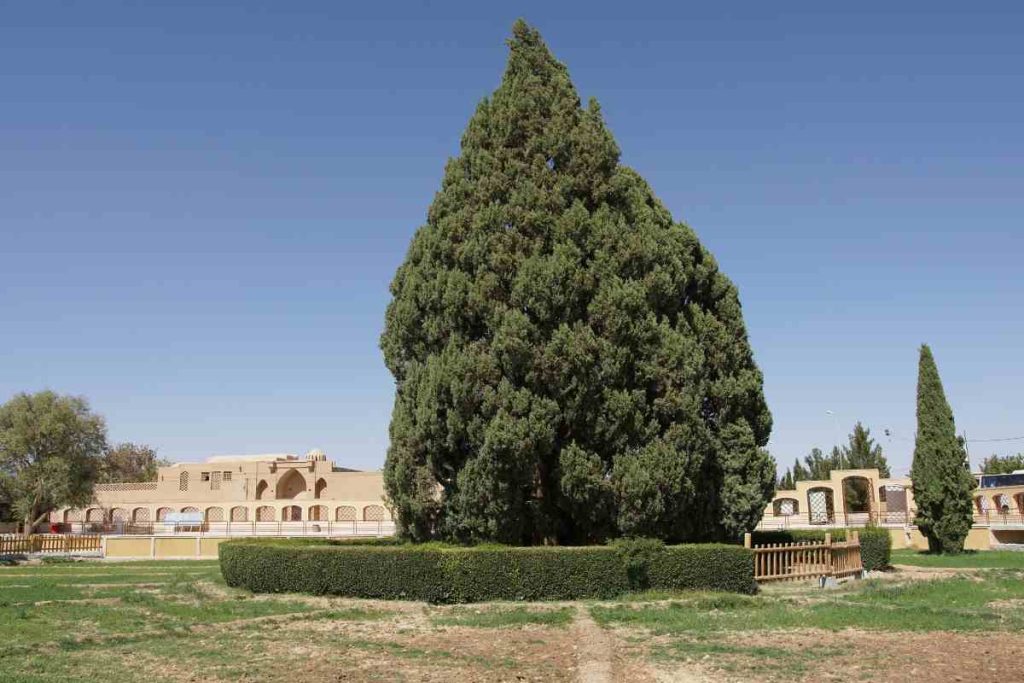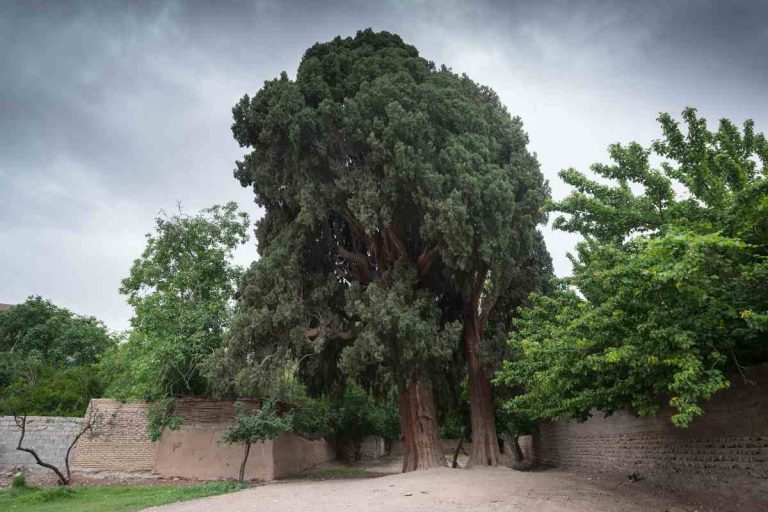The Cypress Abarqu Trees, also known as the Mediterranean Cypress or Cupressus sempervirens, is a species of evergreen tree that holds great historical and cultural significance. These majestic trees have a long and storied past, with roots dating back to ancient civilizations such as Egypt, Greece, and Rome.
The Cypress of Abarqu Trees have been revered for their beauty, resilience, and symbolism, making them a fascinating subject of study. In this article, we will delve into the historical significance, symbolism in different cultures, mythological references, medicinal properties, artistic and literary depictions, conservation efforts, cultural significance in modern times, interesting facts, and future prospects of the Cypress of Abarqu Trees.
Table of Contents
Historical Significance
The origins of the Cypress of Abarqu Trees can be traced back to the Mediterranean region, where they have thrived for thousands of years. These trees played a significant role in ancient civilizations such as Egypt, Greece, and Rome. In ancient Egypt, the Cypress of Abarqu Trees were associated with the god Osiris and were often planted near tombs and burial sites. The Egyptians believed that the trees had a protective and purifying effect on the deceased.
In ancient Greece, the Cypress of Abarqu Trees were closely linked to mourning and grief. They were often planted in cemeteries and used in funeral rituals. One famous mythological reference is the story of Cyparissus, a young boy who was transformed into a Cypress tree by the god Apollo after accidentally killing his beloved stag. This myth symbolizes eternal mourning and grief.
In ancient Rome, the Cypress of Abarqu Trees was associated with the god of the underworld, Hades. They were often planted near graves and used in funeral processions. The Romans believed that the trees had a connection to the afterlife and served as a symbol of immortality.
Symbolism in Different Cultures
The Cypress of Abarqu Trees holds symbolic meaning in various cultures around the world. In Christianity, the trees are often associated with eternal life and resurrection. They are mentioned in the Bible as a symbol of strength and longevity. In Islam, the Cypress of Abarqu Trees are considered sacred and are often planted near mosques and shrines. They are seen as a symbol of protection and spirituality.
In Chinese culture, the Cypress of Abarqu Trees is associated with longevity and immortality. They are often depicted in traditional Chinese paintings and are believed to bring good luck and fortune. In Native American culture, the Cypress of Abarqu Trees is seen as a symbol of wisdom and protection. They are often used in traditional ceremonies and rituals.
Mythological References
The Cypress of Abarqu Trees has been referenced in various mythologies throughout history. In Greek mythology, there is a famous story about a young boy named Cyparissus who was transformed into a Cypress tree by the god Apollo. According to the myth, Cyparissus accidentally killed his beloved stag and was overcome with grief. Apollo, feeling pity for the boy, granted his wish to mourn forever by turning him into a Cypress tree. This myth symbolizes eternal mourning and grief.
In Roman mythology, the Cypress of Abarqu Trees was associated with the god of the underworld, Hades. It was believed that the trees grew in the realm of the dead and served as a connection between the living and the afterlife. The Romans often planted Cypress trees near graves and used them in funeral processions.
In Egyptian mythology, the Cypress of Abarqu Trees was associated with the god Osiris, who was the god of the afterlife and resurrection. The Egyptians believed that the trees had a protective and purifying effect on the deceased. They were often planted near tombs and burial sites.
Medicinal Properties
The Cypress of Abarqu Trees have been used for their medicinal properties for centuries. In traditional herbal medicine, various parts of the tree, including the leaves, bark, and cones, were used to treat a wide range of ailments. The tree was believed to have antimicrobial, antifungal, and antiseptic properties. It was used to treat respiratory conditions, skin disorders, and digestive issues.
In modern times, scientific research has confirmed some of the health benefits associated with the Cypress of Abarqu Trees. Studies have shown that the tree contains compounds that have antioxidant and anti-inflammatory properties. These compounds may help protect against chronic diseases such as heart disease and cancer. The essential oil derived from the tree has also been found to have antimicrobial and antifungal properties.
Cypress of Abarqu Trees in Art and Literature

The Cypress of Abarqu Trees has been a popular subject in art and literature throughout history. They have been depicted in paintings, sculptures, and other forms of visual art. The trees are often portrayed as tall and slender, with dark green foliage that contrasts with the surrounding landscape. They are seen as symbols of beauty, strength, and resilience.
The Cypress of Abarqu Trees has also been referenced in poetry and literature. They are often used as metaphors for life, death, and the passage of time. The trees are seen as symbols of eternity and immortality. They evoke a sense of mystery and awe, capturing the imagination of artists and writers alike.
Conservation Efforts
The Cypress of Abarqu Trees face various threats to their survival, including habitat loss, climate change, and disease. In recent years, there have been concerted efforts to conserve and protect these iconic trees. Conservation organizations and government agencies have implemented measures to preserve their natural habitats and promote sustainable management practices.
One success story is the conservation efforts in the Cilento and Vallo di Diano National Park in Italy. This park is home to one of the largest populations of Cypress of Abarqu Trees in Europe. Conservation initiatives have been implemented to protect the trees and their habitat, including reforestation programs and the establishment of protected areas.
Cultural Significance in Modern Times
In modern times, the Cypress of Abarqu Trees continues to hold cultural significance in various ways. They are often used in landscaping and urban design, adding a touch of elegance and beauty to parks, gardens, and public spaces. The trees are also a popular attraction for tourists, drawing visitors from around the world to admire their majestic presence.
The Cypress of Abarqu Trees also play a role in local economies, particularly in regions where they are native. They contribute to the tourism industry, generating revenue for local businesses and supporting jobs. The trees are often associated with a sense of place and identity, becoming symbols of pride for communities.
Interesting Facts
The Cypress of Abarqu Trees have several unique characteristics that make them fascinating. They are known for their tall and slender shape, which allows them to withstand strong winds and harsh weather conditions. The trees can live for hundreds of years, with some specimens reaching over a thousand years old.
In addition to their historical and cultural significance, the Cypress of Abarqu Trees have had some unusual uses throughout history. The wood of the tree is highly durable and resistant to decay, making it ideal for construction purposes. It has been used to build ships, furniture, and even musical instruments.
Future Prospects
The future prospects for the Cypress of Abarqu Trees are promising, but also uncertain. Continued conservation efforts and research are needed to ensure their survival for future generations. There is still much to learn about these remarkable trees, including their genetic diversity, ecological role, and potential for further medicinal uses.
Preserving the Cypress of Abarqu Trees is not only important for their cultural and historical significance but also for their ecological value. The trees provide habitat for a wide range of species, including birds, insects, and mammals. They also help regulate the climate by absorbing carbon dioxide and releasing oxygen.
Conclusion
In conclusion, the Cypress of Abarqu Trees are more than just beautiful trees. They hold a rich history and cultural significance that spans across civilizations and continents. From their origins in ancient Egypt, Greece, and Rome to their symbolism in different cultures and mythological references, these trees have captivated the human imagination for centuries.
The Cypress of Abarqu Trees have also been valued for their medicinal properties, artistic and literary depictions, and conservation efforts. They continue to play a role in modern times, adding beauty to landscapes, attracting tourists, and supporting local economies.
However, their future prospects depend on our collective efforts to preserve and appreciate these remarkable trees. Let us take action to conserve the Cypress of Abarqu Trees for future generations to enjoy and learn from.
More Sources: The Majestic Montezuma Cypress: A Tree of Myth and Legend


